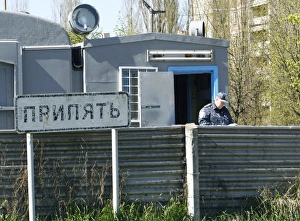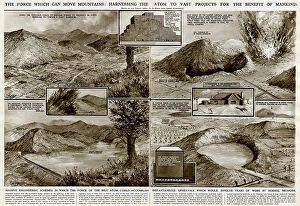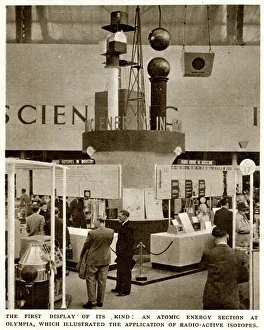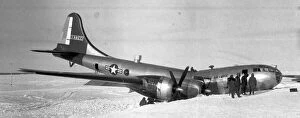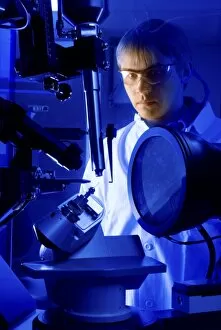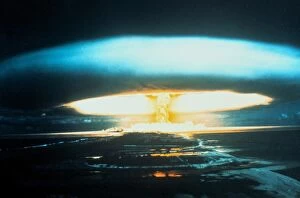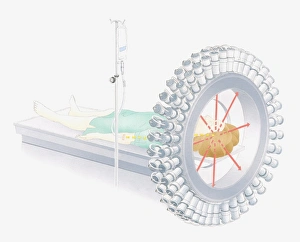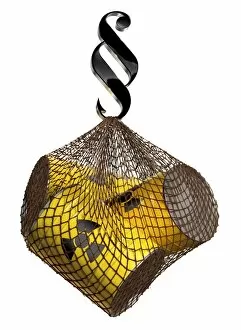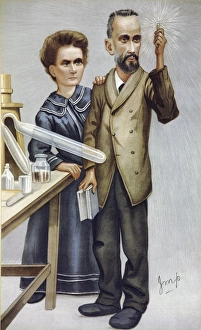Radioactive Collection
"Unveiling the Enigma: Exploring the Radioactive Legacy in Pripyat, Russia" In this captivating color image
All Professionally Made to Order for Quick Shipping
"Unveiling the Enigma: Exploring the Radioactive Legacy in Pripyat, Russia" In this captivating color image, a police guard stands watch over the desolate city of Pripyat, once a bustling hub of domestic life. The eerie silence is broken only by the faint hum of an atomic energy stand at the British Industries Fair in 1949. As we delve into history, G. H. Davis' book "Harnessing the Atom" takes us on a journey through time, shedding light on Madame Curie's groundbreaking discoveries and her alchemical prowess. Her litho portrait hangs on a brick wall as a testament to her scientific brilliance. Amidst this bizarre scene, our attention is drawn to an apartment where animals roam freely - their lives forever altered by radioactivity. A cat perched upon a ceiling beam gazes curiously at its surroundings; copy space invites us to ponder what secrets lie within these walls. The United States Air Force's Boeing WB-29 Superfortress soars above, symbolizing humanity's quest for knowledge and power through radioactive advancements. But it also serves as a reminder of the potential dangers that come with harnessing such forces. A glimpse into medical history reveals radium treatment being used to cure nasal infections in France during 1947-1951. This powerful substance was once hailed as miraculous but later revealed its dark side - leaving behind questions about its long-term effects on human health. French physicists Frédéric Joliot and Antoine Henri Becquerel are celebrated pioneers who dedicated their lives to unraveling nature's most mysterious substance - radioactivity. Their contributions paved the way for future generations of scientists striving to understand this enigmatic force. In Alfred Hugh Fisher's artwork from 1903 titled "The Most Mysterious Substance in Nature - Radium, " we witness both fascination and caution towards this potent element that holds immense potential yet remains shrouded in secrecy.

